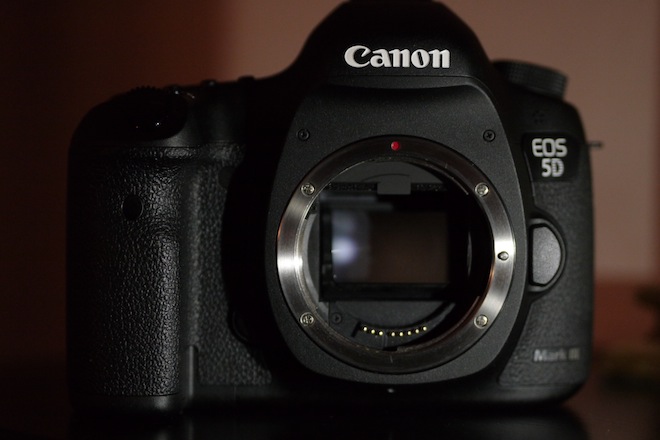
Check out Gizmodo’s take on my GH2 / 5D Mark III comparison video
Here’s a quick guide to the things I’ve found useful with my 5D Mark III video shoots so far.
Picture profile recommendations
I don’t like to use a very flat image profile. I prefer to monitor an image whilst shooting which is representative of what I’m seeing. I also dislike the crushed tonal range that an extended dynamic range image profile like CineStyle produces and the increase in noise it entails – not to mention the hassle of grading it! For satisfying footage straight off the card I recommend Faithful – a typically warm Canon look with saturated colours. Keep sharpness at 0, off. This is far left not the mid point like the other attributes.
Don’t bother reducing contrast or saturation to a minimum as it will bake a crappy look into your image. With contrast and saturation at the mid point the codec grades better in either direction. Increasing saturation in post when it has been recorded at a minimum in camera gives you less colour data to work with. Reducing contrast too much makes low contrast detail muddy looking. Leave the colour tone setting at 0 (mid-point) since adjusting this gives you an ugly green or magenta cast to whites and lighter colour shades.
Sharpen in post not in-camera
The in-camera sharpening is pretty ugly. Turn it off and use the Unsharp Mask in your NLE instead, which throws more flexibility and horsepower at the job of sharpening. Some scenes will sharpen better than others, be selective and judge each shot as it comes and the amounting of sharpening needed to make it pop. Judge sharpness on a moving image, not a still frame grab. Spatial resolution goes up with motion and what looks either too sharp or not sharp enough on a paused frame can change when it moves.

Avoid a very deep depth of field
The 5D Mark III like the other Canon DSLRs is not great at deep depth of field because of the softness of the image. Using a shallower depth of field and a medium-close up to frame your subject helps the perceived level of detail jump right up. The camera can look as sharp as the GH2 given the right composition and sharpening in post.
Turn off noise reduction
The in-camera noise reduction softens your image in low light and reduces the amount of film like fine grain in the image. Since the 5D Mark III already produces a very soft image, a fine grain pattern helps to give a perceived resolution boost. You might even consider adding fine grain afterwards with a plugin in post. One of the best features of the Canon C300 and Panasonic GH2 is the fine noise grain at high ISOs. Turning off noise reduction doesn’t make much difference in how clean your image is in low light but it does reduce the amount of blotchiness and smearing of fine detail.
Use manual white balance
Canon seem to have tamed the auto-white balance after years of complaints that it was too warm. I enjoyed the warmness as I felt it was closer to what my eyes saw and closer to memory colour, despite not strictly being ‘white balanced’ in a technical sense. Now I find that I have to disable auto-white balance and select either a preset of the kelvin setting manually. Test first – check the image carefully in post and make sure your external monitor matches the final footage. Set the monitor or camera up alongside your NLE and compare the images.
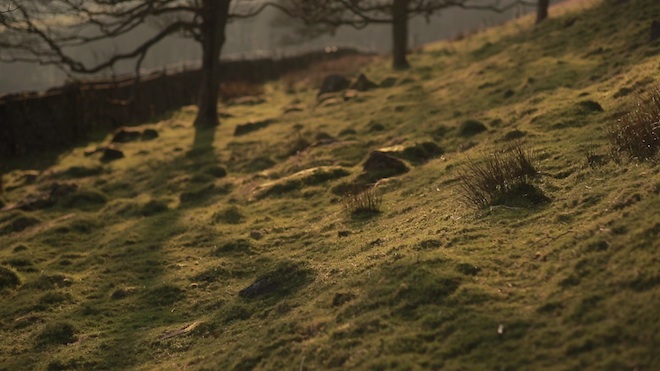
Select the best recording format
Use 1080/25/24p in ALL-I mode. IPB isn’t worth bothering with as the compression is too high. Since the 5D Mark III is already resolution challenged, forget 720/60p unless you absolutely need to record very fast moving scenes in slow motion. Twixtor works superbly on 24p otherwise.
Export to a high bitrate for Vimeo and YouTube
I use a VBR 1 pass H.264 codec in Premiere Pro CS5.5 to export my videos to Vimeo. Bitrate is on the high side for the web – an average of 32Mbit and a maximum of 40Mbit. The screen grab below shows my settings but ignore the part about 25 fps if you’re shooting 24p in NTSC land. Also select the option in Vimeo’s clip settings to stream your video in 1080p, rather than the default SD or 720p.
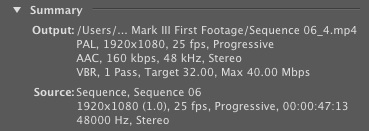
Use moire to focus with
The live view display scales the image to roughly VGA 640×480 and such is the extreme downsampling that some moire and aliasing is still visible on the live view display. This helps manual focus, making the focus plane rougher and more animated.
Re-assign the magnified focus assist
The amount of functionality than can be programmed to each programmable button on the 5D Mark III is quite limited but thankfully the ‘punch-in’ to focus can be assigned to SET. This means it is under your right thumb, rather than somewhere near your left hand!
Use a monitor instead of the built in LCD
Shooting with a screen that cannot be angled upwards when the camera is on a tripod is a pain. The LCD also does not have great visibility in bright daylight. If you don’t mind the added bulk, use an HDMI monitor or one that double as both an EVF or small monitor like the Zacuto EVF. Invest in good rigging to attach the monitor to the camera, as this will affect its usability.
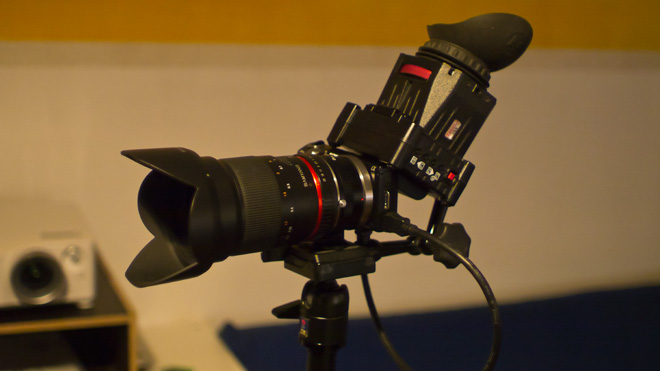
Above: my Sony NEX 5N rig with Zacuto EVF. A similar setup can be performed with the 5D Mark III for an articulated monitor or viewfinder
Assign the movie start/stop button to the shutter release
Many will find this more convenient. If you don’t plan to shoot stills almost simultaneously with video, go to the SHOOT5: Movie menu and assign the Movie Shoot Button to both the normal start/stop button and the shutter. To take stills you have to flick the lever on the live view button to enter stills mode. You can by the way take stills in the middle of a recording, but beware that the clip will pause for a second or two when the shutter is released.
Turn off automatic LCD brightness
Set this to manual for more accurate judgement of shot exposure using the LCD. It is hell with it turned on and it will affect your footage.
Turn off auto lighting optimiser
This can override manual exposure if enabled, causing unexpected changes in the middle of a shot!
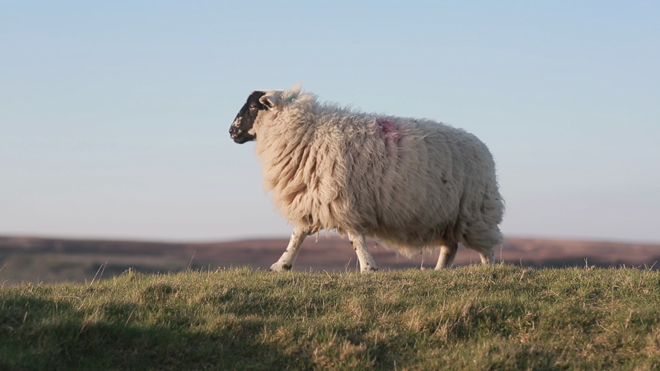
Remove the viewfinder cup
The viewfinder cup which comes with the camera in a small plastic bag is simply terrible. When attached it wobbles. The last thing you want is the sound of a wobbling piece of plastic being picked up by your mic.
Stop down the lens
Depth of field control is pretty critical on a full frame sensor. Not every backdrop is better blurred out completely. Show restraint and not only will it be easier to get your subject continuously in focus but an attractive surrounding won’t look like a blank canvas.
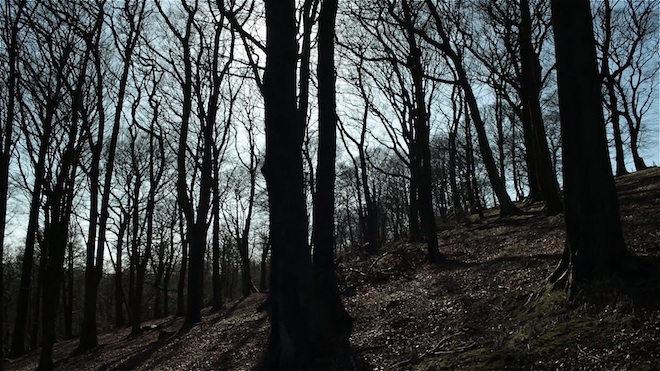
Have a GH2 or FS100 as a second body
It is financially viable, the Panasonic GH2 and Sony FS100 compliment the 5D Mark III very well. A larger range of lenses can be adapted. They have more manageable focus when the lens is wide open at F2 or F1.4 in low light. They have articulated monitors. The FS100 has slow mo in 1080p and peaking for manual focus. They both resolve more detail in landscape shots especially at infinity focus. I won’t detail all the advantages here but check back for a full run-down of the FS100 versus GH2 and 5D Mark III later next week.
Consider what the 5D Mark II was capable of in the right hands
Some superb looking stuff was shot on the predecessor. The 5D Mark III is even better. Yes it is a disappointment in many ways and should have been far better. But remember it is full frame – that look is special – great in low light, great at rendering your photographic lenses, a superb sensor in a body with great ergonomics and a diminutive size. Moire and aliasing is pretty much fixed. Audio is much improved. The codec is intra-frame and at a higher bitrate than on the Nikon D800’s internal codec. Frustration aside it is still pretty unique.


